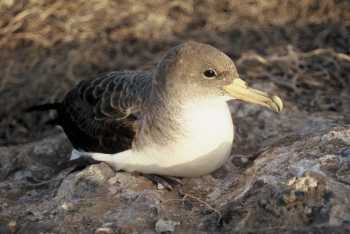Rosana Arizmendi-Mejía (Institut de Recerca de la Biodiversitat (IRBio), University of Barcelona, Spain) and colleagues, writing in the Journal of Experimental Marine Biology and Ecology, have looked at how the Cory’s Shearwater Calonectris borealis adjusts its physiology from migrating to breeding.
The paper’s abstract follows
“The energetic demands of animals change throughout their annual life cycle. In migrating birds, reproduction and migration are the two most energy demanding processes; the transition from one to the other require a number of physiological adjustments. When arriving to the breeding grounds, long-distance migratory birds need to recover from migration and prepare for reproduction. This process is crucial, since pre-breeding body condition has been established as a critical factor influencing reproductive success in several avian species. In the present study we examined the physiological condition of the Cory's shearwater (Calonectris diomedea borealis, Cory 1881) after arrival from migration to a breeding colony, as well as its changes throughout the pre-laying period. We weighed and took blood samples from 149 shearwaters newly arrived to their breeding colony. If birds were found again after 10, 20, 30 or 40 days since their first capture, they were resampled. We examined individual variation of biochemical parameters, body mass and blood oxygen transport capacity in both males and females. Our results indicate that birds were improving their body condition after arrival from migration. Plasma metabolites revealed shearwaters were depositing fat and degrading muscular mass during post-migration and pre-laying, suggesting shearwaters were remodeling their body composition to have more space for lipid reserves. Females started fat deposition earlier than males, probably to cope with the lipid demands of egg formation. This study shows that biochemical blood parameters are good indicators of the ecophysiological changes experienced by post-migrating and pre-breeding birds.”

Cory's Shearwater. Photograph by Paulo Catry
Reference:
Arizmendi-Mejía, R., Militão, T., Viscor, G. & González-Solís, J. 2013. Pre-breeding ecophysiology of a long-distance migratory seabird. Journal of Experimental Marine Biology and Ecology 443: 162-168.
John Cooper, ACAP Information Officer, 21 May 2013

 English
English  Français
Français  Español
Español